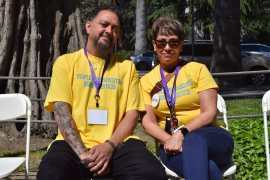“My time is coming. It’s already time for me to die. I can’t wait. … So yeah I plan to kill myself during spring break, which by the way, starts in two days.” — Wynne Lee wrote in a March 29, 2012 journal post
Wynne Lee’s mind was at war with itself – one voice telling her to kill herself and another telling her to live. She had just turned 14.
She tried to push the thoughts away by playing video games and listening to music. Nothing worked. Then she started cutting herself. She’d pull out a razor, make a small incision on her ankle or forearm and watch the blood seep out. “Cutting was a sharp, instant relief,” she said.
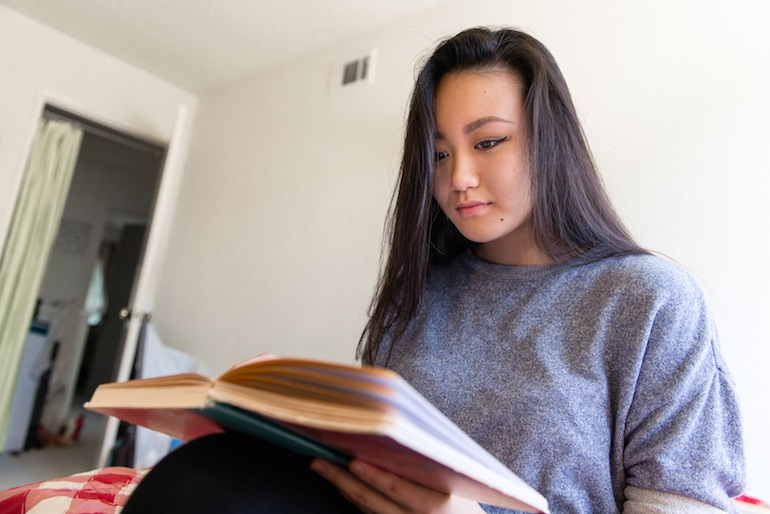
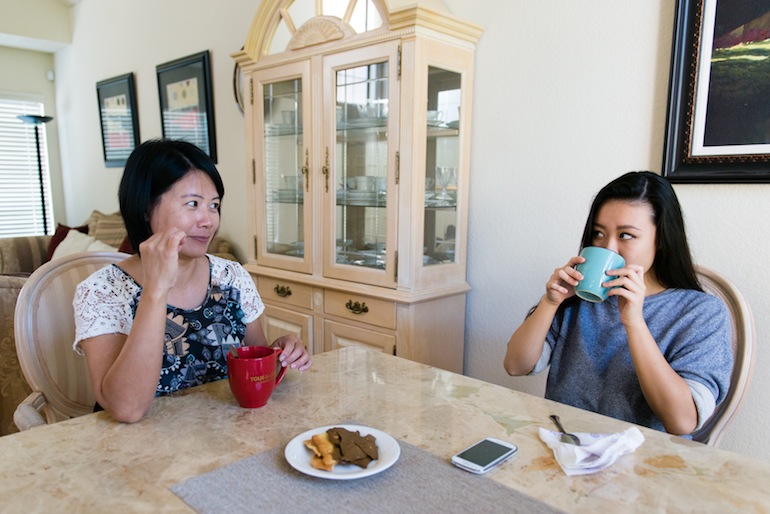
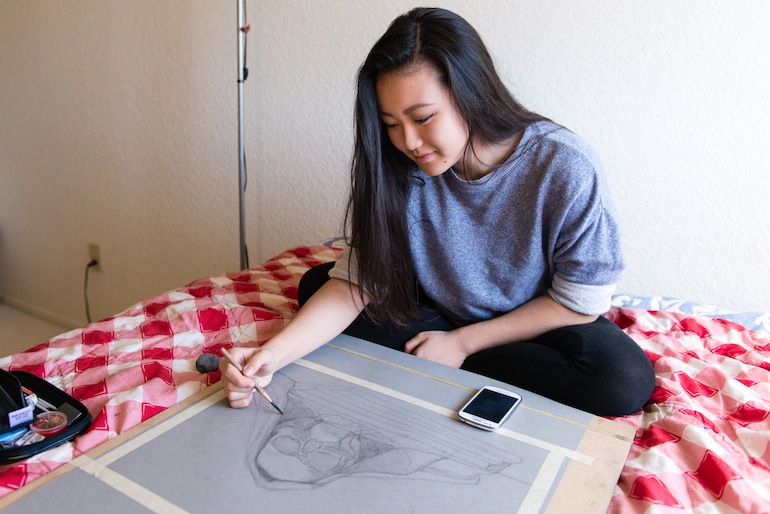

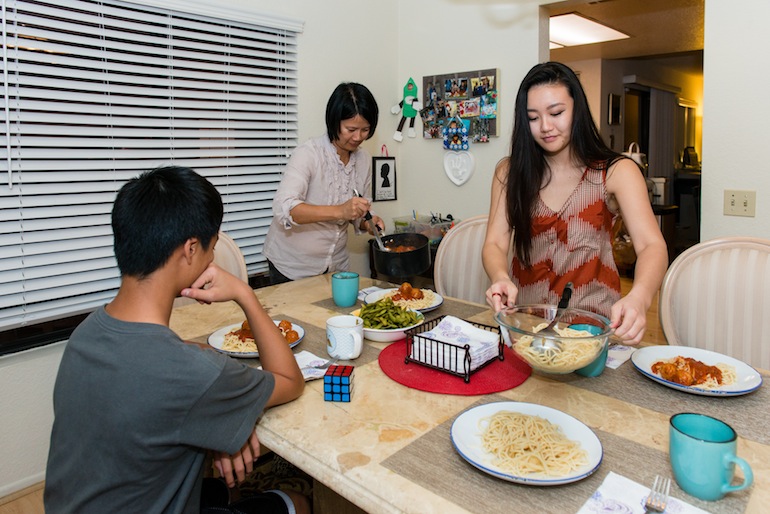
Some days, that wasn’t enough. That’s when she’d think about suicide. She wrote her feelings in a journal in big loopy letters.
At first, Wynne thought she felt sad because she was having a hard 8th grade year. She and her boyfriend broke up. Girls were spreading rumors about her. A few childhood friends abandoned her. But months passed and the feelings of helplessness and loneliness wouldn’t go away.
“I was really happy as a kid and now I was feeling like this,” she said. “It was really unfamiliar and scary.”
**
Wynne Lee didn’t know where her despair was coming from. The words “depression” and “suicide” were not in her vocabulary. She knew, however, that she was failing — she was defying expectations of who she was supposed to be.
Growing up in the suburbs of the San Gabriel Valley, a well-known destination for Asian immigrant families with high educational and economic aspirations, she believed she was supposed work hard, get good grades and make her Taiwanese immigrant parents proud. She wasn’t doing any of that, and she didn’t know how to ask for help.
When it comes to mental health treatment, Asian Americans often get short shrift. Researchers say they are both less well-studied and less likely to seek treatment. While rates of suicide tend to be lower than national rates overall, Asian Americans are far from homogeneous and the limited research suggests depression and suicidal impulses vary significantly depending on age, gender and national origin.
For instance: Asian American college students are more likely to seriously consider suicide than white peers. According to 2007 data from the National Center for Health statistics, Asian-American females ages 15 to 24 were second only to Native Americans for suicide deaths. In addition, researchers have found that Asian women born in the U.S. are at significantly higher risk of suicidal thoughts and attempts than others, including women immigrants and U.S.-born men.
Because they may not see depression as a brain disease or fear stigma, many Asian immigrant families don’t reach out for help until there is a crisis, experts say. “A lot of Asians avoid seeking treatment until the disease is advanced,” said MaJose Carrasco, director of the multicultural action center for the National Alliance on Mental Illness.
And even when they do reach out, they often find both medication and psychotherapy a poor fit. Patients who seek care “are telling us is that they don’t think that psychotherapy, which is designed for white Americans, really works for them,” said Hyeouk “Chris” Hahm of Boston University, who received federal funding to test a program addressing culture and family issues among Asian American women.
There are relatively few psychologists and other mental health professionals of Asian heritage. Other therapists may use culturally biased screening tests, or fail to recognize that symptoms of depression may be different for Asian Americans. For example, these patients are more likely to report physical symptoms such as headaches than feelings of sadness, said Nolan Zane, director of the Asian American Center on Disparities Research at University of California, Davis.
Zane added that patients from immigrant families are frequently reluctant to take medications with which they are unfamiliar. They may prefer Eastern medicines or fear side effects, including fatigue, that make it harder to keep up with work or school.
Parents sometimes stand in the way of treatment, intentionally or not, because of the high standards they set. Kids can be burdened by the sacrifices their parents have made for their benefit.
“It takes a few generations before they can finally be free,” said Ranna Parekh, director of the division of diversity and health equity for the American Psychiatric Association.
**
I’ve missed school for almost a week now (three days). I mean I feel really bad… — Wynne Lee’s journal, 9/15/13
At the beginning of her freshman year in high school, Wynne frequently woke up feeling exhausted and unable to get out of bed. She would curl up and go back to sleep under the red blanket she’d had since she was a toddler.
Wynne’s mom, Maggie Huang, begged her daughter to go to school. She yelled at her and took away her phone. Wynne still refused to go. “I thought she was just being lazy,” Huang said.
Altogether, Wynne missed 47 days in 9th grade — more than a quarter of the school year. She arrived late 21 days. The next year, she missed 39 days and was tardy 63 times.
Her grades fell. Administrators at Diamond Bar High School warned her that things had to change. The Los Angeles County district attorney’s office threatened her parents with prosecution because of the absences.
Huang said she and her husband believed they were doing everything they could for their three children. They didn’t know where they had gone wrong with Wynne.
They lived in a middle-class community east of Los Angeles, in a beautiful two-story home. Wynne’s father works for a manufacturing company. Huang stays home with Wynne and her younger brothers, helping them do homework and taking them to after-school activities and to museums and parks on weekends.
As a young girl, Wynne was good-natured and energetic, her mother said. She loved swimming and drawing; she excelled at hip hop and modern dance. Now, Wynne was sullen and crying all the time. “I just worried,” Huang said. “I was so worried.”
But Huang didn’t know what to do.
Wynne was just finishing middle school when Huang went into her room, read her journal and saw the threats of suicide. Scared, Huang told the school counselor. A social worker came to the house to talk to the family about getting help.
Huang enrolled in a parenting class and tried to talk to her daughter more about her feelings. She asked for advice from her sister, a high school counselor in Taiwan. “She said it was a stage and that I needed to be patient,” Huang said.
But things only got worse. One afternoon Wynne asked for a ride to see a friend. She had skipped school that day and her mom said no. They argued. “I couldn’t do it anymore,” Huang said. She called the police.
Wynne ran downstairs and grabbed a bottle of prescription pills. She swallowed as many as she could.
Paramedics rushed Wynne to an emergency room; then she landed in a psychiatric facility. She remembers sitting in a room with a huge window, coloring pictures. Doctors told her she had depression.
Finally, Wynne had a name for what was wrong.
At the hospital, Wynne was glad to meet other girls like her. It made her feel less alone. But when she got home, her depression didn’t lift.
**
“The suicidal thoughts are seeping back here and there by droplets. … Therapy and counseling are so not … helping me either. All we do in these sessions is chat. I’m not feeling any better. I’m still not able to handle this at all. I’m not healing.” — Wynne Lee’s journal, 5/18/14
After the hospital, Wynne went into outpatient therapy at Pacific Clinics, a counseling and treatment agency based in Arcadia.
Maribel Contreras, the program director, said Wynne’s suicide attempt – along with the school absences, irregular sleeping and angry outbursts at her parents – made it very clear that her case was “very serious,” she said.
Wynne saw a few different therapists but didn’t feel a strong connection with any of them. She said one didn’t even take her depression seriously. The therapist treated her like “a little kid upset someone took my candy,” she said.
In art therapy, she drew her greatest fear – loneliness – as a swirl of dark colors.
Some days she came away feeling better. “There were bursts of healing,” she said. But other days, she still felt urges to hurt or kill herself. “That was the only thing I could control – whether to end my life.”
A psychiatrist suggested she take antidepressants, but Wynne rejected the idea. “I just wanted to get better on my own,” she said.
Wynne felt she made little progress in therapy and ultimately quit late last year.
At home, she rarely came downstairs to eat with her family. She feared being a burden to her family. Her 11-year-old brother, Kevin, said she often locked herself in her room. He could hear her crying. “It was hard to watch her like that,” he said.
After her grades dropped, she started on an independent study program. Being away from the drama of high school helped, Wynne said. But it also made her feel more isolated.
Huang, too, felt alone. Other Asian moms were always asking about Wynne and how she was doing in school. She felt they blamed her for Wynne’s lack of motivation.
“To them, grades are everything,” she said.
For Wynne, school wasn’t all that slipped. She started skipping practices for her hip hop team and showed up late for competitions. Unaware of Wynne’s depression, the owner of the dance studio was upset by Wynne’s lack of commitment, especially after she’d worked so hard to make the team.
“Once she achieved that goal, it seemed it meant so little to her,” the owner, Bobbi Dellos, said. “And she was so talented.”
In the end, Dellos asked Wynne to leave the team.
**
“‘And even when you’re ready to let go. When you’re ready to break free. When you’re ready to be brand-new. Lonliness is an old friend standing beside you in the mirror. … Loneliness is a bitter, wretched companion.’” — Wynne Lee’s journal, quoting author Tahereh Mafi, 4/6/14
Near the end of her sophomore year in high school, Wynne’s mother took her out to dinner. Sitting across from her daughter at the Cheesecake Factory, Huang told her that she loved her. She said she believed that Wynne would succeed — no matter what.
“That’s when I started to open up to her,” Wynne said.
Wynne’s feelings were beginning to shift – she didn’t know exactly why. But it helped to talk to her mom that night. She wrote in her journal afterward: “This is going to be the best summer ever.”
That fall, Pacific Clinics invited her to participate in a panel for Hollywood screenwriters and producers about mental health. “I was nervous,” Wynne said, but the experience gave her confidence. Talking to others about her depression, in general, seemed to help.
In the last few months, she said, it has been easier to control intrusive, chaotic thoughts. “I can keep them on a leash,” she said. “Before, they were everywhere.”
Although she stopped therapy, she now believes she got something from it. “I used to be hotheaded and had tough times resolving conflicts,” she wrote in her journal. “But that’s before counseling.”
Her energy returned. She took a test to graduate early from high school and enrolled in community college, where she is taking a drawing class. She started dancing again.
On a recent night, she stood in the front row at a studio in a grey tank top, picking up the routine quickly and flipping her long hair to the music. During a quick break, she caught her breath. “I feel really, really good,” she said.
Wynne said she knows that the depression, and the loneliness, may return. “I’ve accepted it as part of who I am,” she said.
But as she ran back toward the blaring music, it seemed the last thing on her mind.
Blue Shield of California Foundation helps fund KHN coverage in California.






